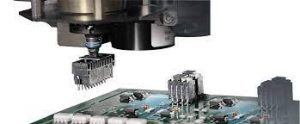used for manufacturing smt assembly
Manufacturing Surface Mount Technology (SMT) assemblies involves a combination of highly specialized techniques and processes aimed at efficiently and accurately assembling electronic components onto printed circuit boards (PCBs). These methods encompass various stages, from initial PCB fabrication to final assembly and testing. Let’s delve into some of the key methods used for manufacturing SMT assemblies:
The manufacturing process begins with the fabrication of the PCBs themselves. This involves several steps, including substrate material selection, panelization, circuit layout design, and photolithographic patterning. Modern PCB fabrication often utilizes advanced techniques such as laser drilling, chemical etching, and automated optical inspection (AOI) to achieve precise and high-quality PCBs. The quality and accuracy of the PCBs lay the foundation for successful SMT assembly.
Once the PCBs are fabricated, solder paste—a mixture of flux and tiny balls of solder—is applied to the pads on the PCB where components will be placed. This is typically done using a stencil made of stainless steel or polymer, which is aligned with the PCB and then solder paste is spread over it using a squeegee. Alternatively, solder paste can be applied using jet dispensing machines for precise and automated deposition.
After solder paste application, components are placed onto the PCB using automated pick-and-place machines. These machines use vision systems to accurately position components based on their coordinates provided by the PCB layout data. Components can be placed in various orientations, including 0-degree, 45-degree, or 90-degree rotations, depending on the design requirements. High-speed pick-and-place machines can achieve placement rates of thousands of components per hour, ensuring efficient assembly.

What methods are used for manufacturing smt assembly?
Once components are placed on the PCB, the assembly goes through a reflow soldering process to create permanent electrical connections. In reflow soldering, the entire assembly is subjected to controlled heating in a reflow oven, causing the solder paste to melt and form solder joints between the component leads or terminations and the PCB pads. The reflow process involves multiple temperature zones, including preheating, soaking, and reflow stages, to ensure proper solder wetting and joint formation. Advanced reflow ovens may also incorporate nitrogen atmospheres to minimize oxidation and improve solder joint quality.
Throughout the manufacturing process, various inspection techniques are employed to ensure the quality and reliability of SMT assemblies. Automated optical inspection (AOI) systems use cameras and image processing algorithms to detect defects such as missing components, misaligned components, solder bridging, and insufficient solder volume. X-ray inspection may also be used to inspect hidden solder joints and detect defects such as voids or insufficient solder coverage. In addition to automated inspection, manual inspection by trained operators may be performed to verify assembly quality and identify any anomalies that automated systems may have missed.
Once the smt assembly is completed, it undergoes testing and functional verification to ensure that it meets the specified performance criteria. This may involve electrical testing, where the assembly is subjected to various electrical stimuli to verify proper functionality and performance. Functional testing may also be conducted, where the assembly is tested under simulated operating conditions to ensure that it performs as intended. Defective assemblies are repaired or reworked as necessary to meet quality standards.


